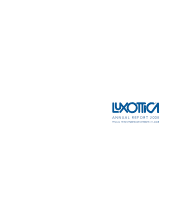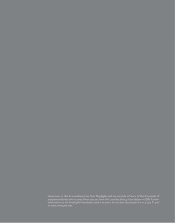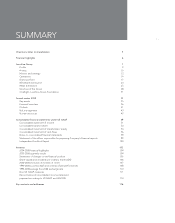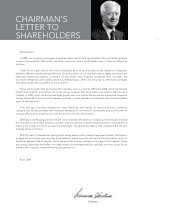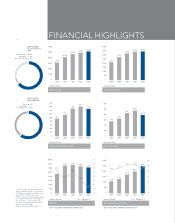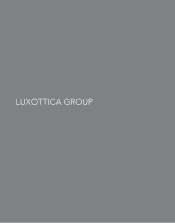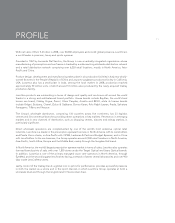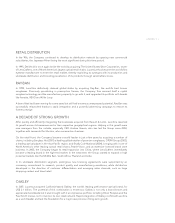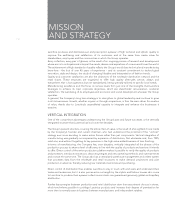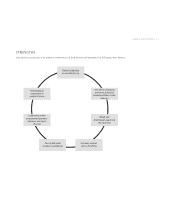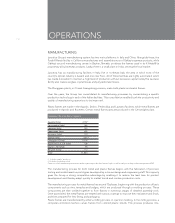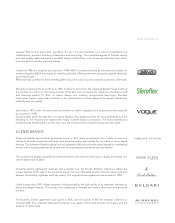LensCrafters 2008 Annual Report Download - page 12
Download and view the complete annual report
Please find page 12 of the 2008 LensCrafters annual report below. You can navigate through the pages in the report by either clicking on the pages listed below, or by using the keyword search tool below to find specific information within the annual report.
FOUNDING
Luxottica Group originated in 1961, when Leonardo Del Vecchio set up Luxottica di Del Vecchio e C. S.a.S.,
which subsequently became a joint-stock company under the name of Luxottica S.p.A.
Having started out as a small workshop, the Company operated until the end of the ‘60s as a contract
producer of dies, metal components and semi-finished goods for the optical industry.
Leonardo Del Vecchio gradually widened the range of processes until he had an integrated manufacturing
structure capable of producing a finished pair of glasses.
In 1971, Luxottica’s first collection of prescription eyewear was presented at Milan’s MIDO (an international
optics trade fair), thus marking Luxottica’s definitive transition from contract manufacturer to successful
independent producer.
EXPANSION IN WHOLESALE DISTRIBUTION
In the early ’70s, the Company sold its frames exclusively through wholesale dealers. In 1974, after five
years of sustained development of its manufacturing capacity, Del Vecchio understood the importance of
directly controlling distribution and started to pursue a strategy of vertical integration, with the goal of
distributing frames directly onto the market. The first step was to acquire Scarrone S.p.A., which brought
with it vital knowledge of the Italian market.
International expansion began in the ‘80s with the acquisition of independent distributors, the opening of
branches and the forming of joint-ventures in key foreign markets. Having started with the opening of the
first commercial subsidiary in Germany in 1981, the Company’s international wholesale development
culminated in the acquisition of Avant-Garde Optics Inc., a wholesale distributor in the United States
market.
EYEWEAR: A NEW FRONTIER OF FASHION
In the meantime, Luxottica continued to invest in its products. The acquisition of La Meccanoptica
Leonardo, owner of the Sferoflex brand and an important flexible hinge patent, enabled the Company to
boost the image of its products’ quality and increase its market share.
But it wasn’t until the end of the ’80s that eyeglasses, until then perceived as mere sight-correcting
instruments, underwent the crucial evolution into “eyewear.” Continual aesthetic focus on everyday
objects and interest on the part of designers in the emerging accessories industry led Luxottica, in 1988,
to embark on its first collaboration with the world of fashion, entering a licensing agreement with Giorgio
Armani. The Company followed up that initial experience (terminated in 2003) with numerous others,
gradually building a world-class brand portfolio featuring names like Bvlgari (1996), Salvatore Ferragamo
(1998), Chanel (1999), Prada and Versace (2003), Donna Karan (2005), Dolce & Gabbana and Burberry
(2006), Polo Ralph Lauren (2007) and Tiffany (2008).
As for house brands, the Company slowly expanded in the sun business by buying Vogue (1990) and the
famous Persol (1995), a brand with a glorious tradition and a mid- to high-end positioning.
FINANCIAL MARKETS
In 1990, Luxottica listed its ADS (American Depositary Shares) on the New York Stock Exchange, thus
raising its public profile and accelerating its growth. In 2000, Luxottica’s stock was listed on Borsa Italiana’s
electronic share market and has been in Italy’s top 30 equities index since 2003.
HISTORY
> 10



